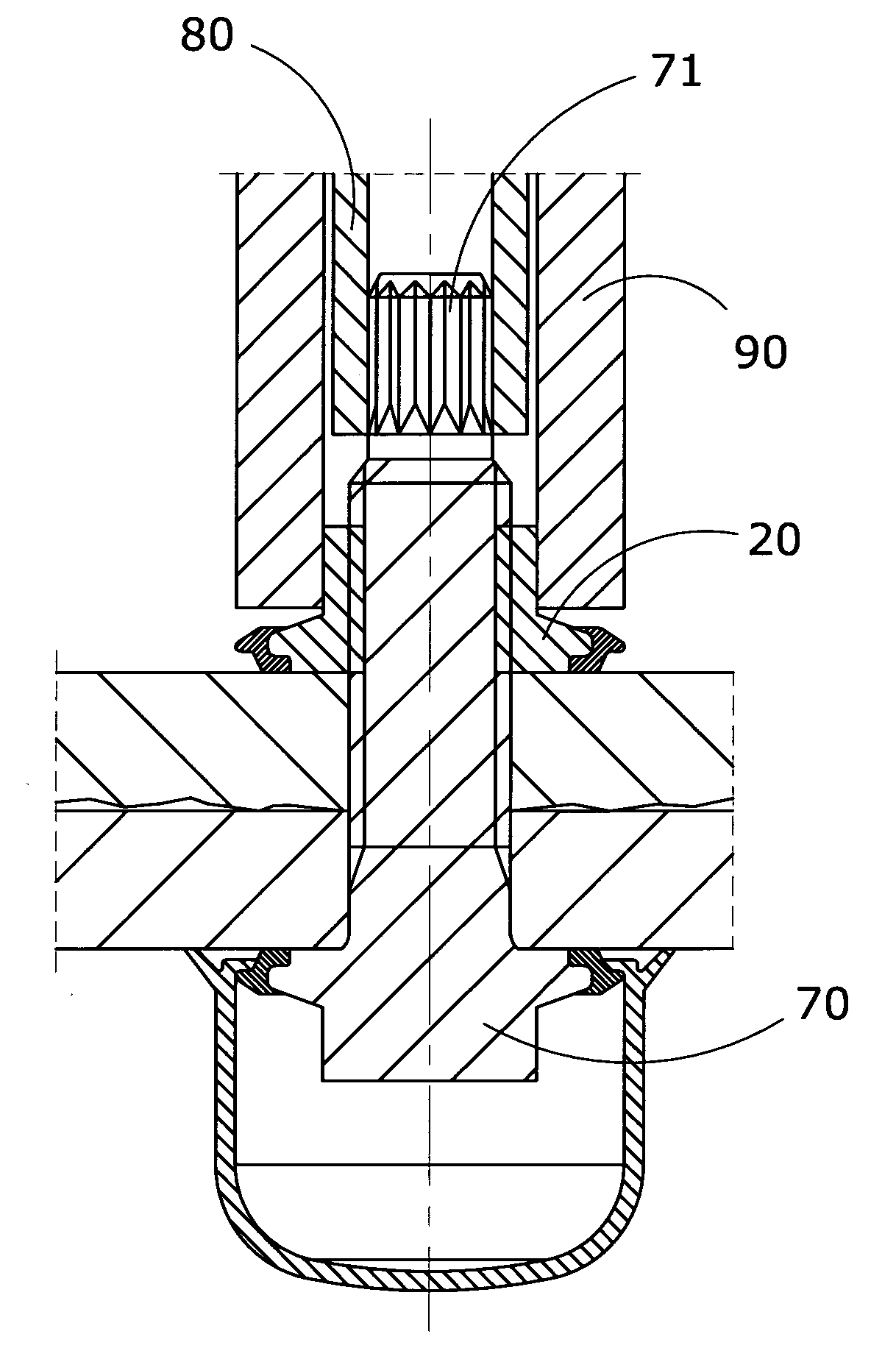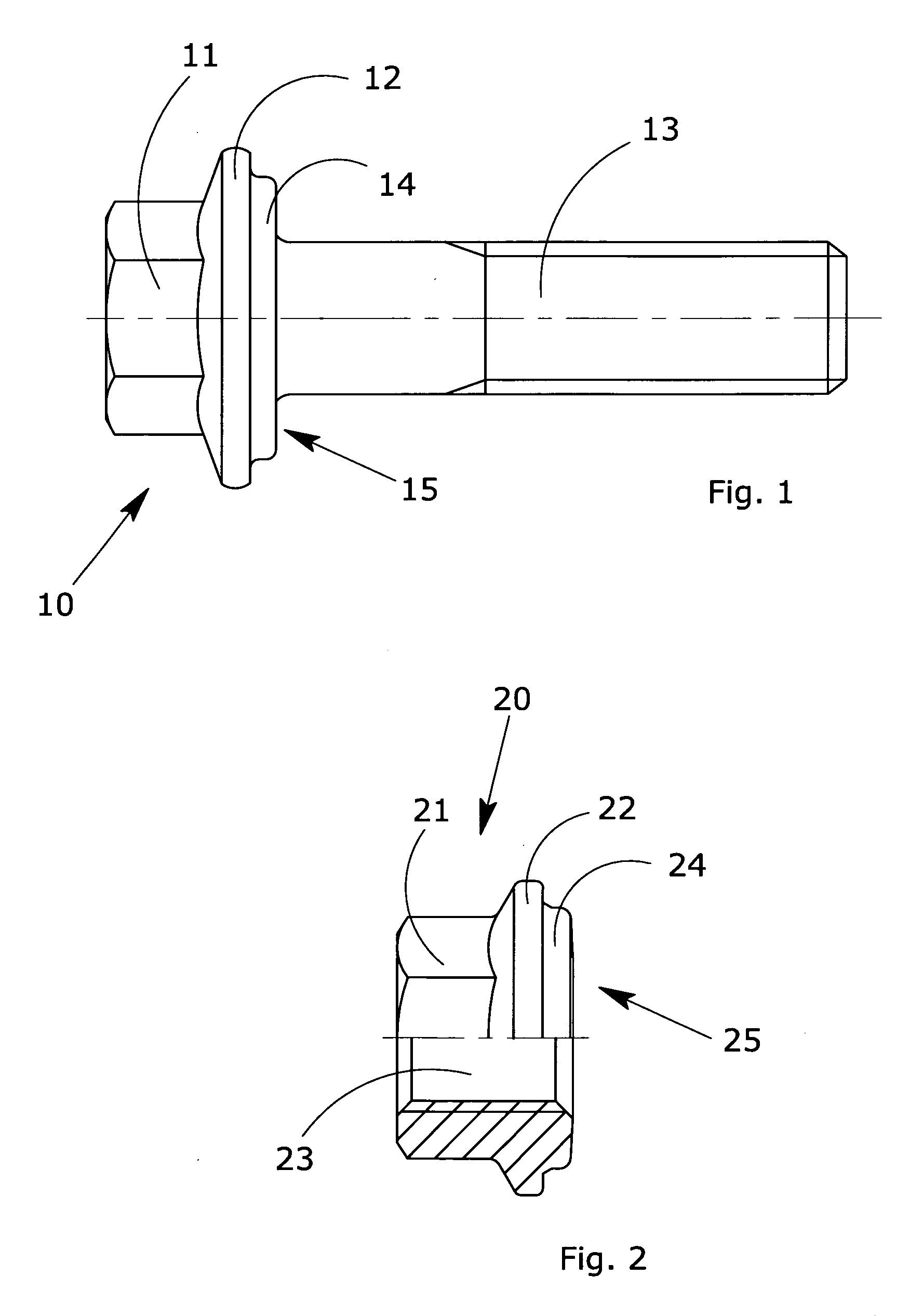Structural fixing system with high clamping force and tightening precision with high corrosion resistance
a fixing system and high clamping force technology, applied in the direction of structural elements, screws, nuts, etc., can solve the problems of increasing the cost of the fixing system increasing the number of fixing points, etc., and achieve high clamping force and high corrosion resistance
- Summary
- Abstract
- Description
- Claims
- Application Information
AI Technical Summary
Benefits of technology
Problems solved by technology
Method used
Image
Examples
first embodiment
[0048]In accordance with a first embodiment, the system according to this invention comprises a flanged metal bolt, obtained by means of cold or hot forming.
[0049]This bolt consists of a generally hexagonal-shaped head, which widens at its base to form a circular flange. The bolt also comprises a threaded shank forming the actual fixing element.
[0050]According to an important feature of the invention, the space between the base of the flange and the shank of the bolt is equipped with a precision collar with a smaller diameter than the diameter of the flange.
[0051]The precision collar described above is obtained during the forming operations, for example cold forming on a multi-station press, at a stage in which it is possible to achieve very limited dimensional tolerances.
[0052]If it is necessary to produce the bolt by means of hot forming and limited tolerances of the collar cannot be achieved, then a subsequent machining operation must be carried out to provide the collar with exa...
second embodiment
[0056]the invention consists of a flanged metal nut obtained by means of cold or hot forming.
[0057]This nut consists of a generally hexagonal-shaped head, which widens at its base to form a circular flange. The nut also comprises a longitudinal internally threaded through hole forming the actual fixing element.
[0058]According to an important feature of the invention, as in the case of the flanged bolt, the space below the base of the flange is equipped with a precision collar with a smaller diameter than the diameter of the flange.
[0059]All the considerations described above relative to the dimensional precision of the collar, gives the possibility of using the flanged nut according to this invention also for fixing light and heavy metalwork elements, apply to this case too.
[0060]Similar to the case of the flanged bolt, according to another embodiment of the invention the precision collar has a further important support function for a peripheral seal made from substantially elastic ...
PUM
 Login to View More
Login to View More Abstract
Description
Claims
Application Information
 Login to View More
Login to View More - R&D
- Intellectual Property
- Life Sciences
- Materials
- Tech Scout
- Unparalleled Data Quality
- Higher Quality Content
- 60% Fewer Hallucinations
Browse by: Latest US Patents, China's latest patents, Technical Efficacy Thesaurus, Application Domain, Technology Topic, Popular Technical Reports.
© 2025 PatSnap. All rights reserved.Legal|Privacy policy|Modern Slavery Act Transparency Statement|Sitemap|About US| Contact US: help@patsnap.com



